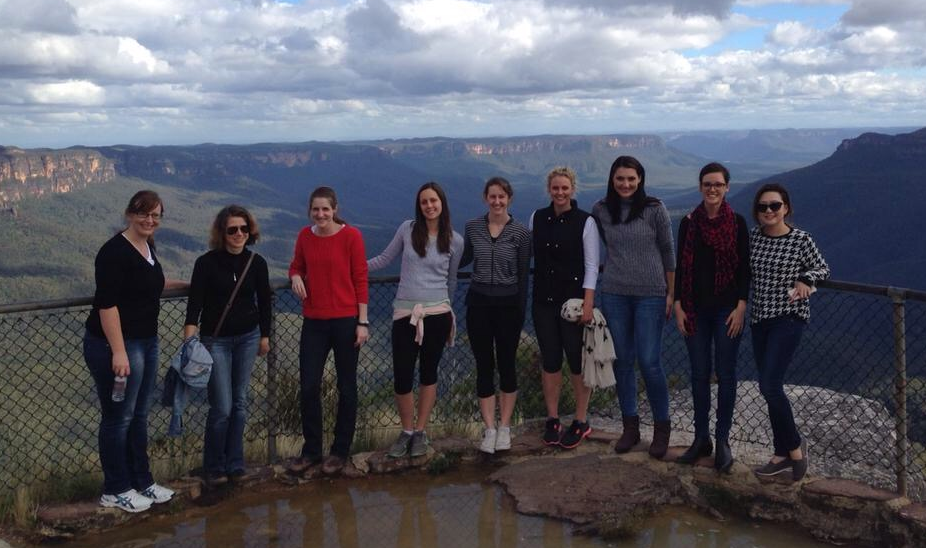
Women in science have shaped so much of our world today, from Marie Curie’s contributions in the field of radioactivity to Rosalind Franklin’s work on X-ray diffraction images of DNA. The recent appointment of Professor Anne Kelso as CEO at NHMRC further highlights the critical role women play in science, medicine and research. I have personally been blessed by working with outstanding female researchers, with 80% of my team being women. The photograph shows some of my research team on our recent annual retreat at The Blue Mountains. Not a Y-chromosome in sight. Perhaps that’s why I was asked to write this short piece!
How can we as a science community continue to foster the development of exceptional researchers, and specifically women in science? When I recently undertook a selected, underpowered, gender-biased, un-validated survey study of some of the women in my research team asking what sorts of things would make their life in science more manageable, the response was overwhelming. The common issues included the need for flexibility of working hours, being able to work from home, arranging child pick-ups and drop-offs, having onsite childcare, knowing the household wont fall apart when they travel overseas to present their research, and basically someone to look after the home. It struck me what one of the main things women in science need is a good “wife”!

The reality is that the majority of women in science have partners who work, and so the onus on them is to be both competitive outstanding fulltime researchers and also perform all the fulltime “wife” duties. This may be part of the reason there is a higher attrition of women than men as their careers in science progress. While there is no single solution, I would propose one essential element underpinning the support of women in science is mentorship. Mentoring is basically the relationship in which an experienced colleague supports someone less experienced, advising and guiding on such things as career goals and personal development. While both men and women need mentoring, the reality is that women meet more career barriers than men and so mentorship is most vital in women.
There are some key basic elements of mentoring. Mentoring should be confidential and voluntary, both for the mentor and mentee. Mentoring of women (maybe rename as “womentoring”) should cover both professional and personal support, with the common goal to plan, build, and foster a successful career in science. To me the gender of the mentor is irrelevant; what matters is a mentor with a genuine desire, passion and dedication to hold the mentee’s best interests at the forefront, always, and to be one of their role models. A mentor to illuminate career opportunities, identify potential barriers to career progression, and to basically be the mentee’s number one supporter and advocate. Initiatives such as Women in Science AUSTRALIA and Franklin Women are wonderful, much-needed groups to support women in science, but it’s the addition of mentorship at the individual level which will result in women being promoted as speakers at international meetings, members on journal editorial boards, heads of research groups, and key leadership roles in the science community.
While the gender of the mentor to me is optional, my experience of mentoring both women and men has highlighted that there are certainly issues very specific for mentoring women in science. Many of these issues are mentioned briefly above. As a mentor, workplace flexibility needs to be supported in every way possible. While the mentor may or may not also be the person’s boss/employer, ensuring there is time flexibility is essential in supporting women in science, allowing times for school drop-offs and pick-ups, school holiday arrangements, and provisions for childcare. This workplace flexibility should include allowing women to work from home where this is a feasible option.
Promotion of women to leadership positions is also an essential part of the mentor’s role. This may range from leadership positions within the research team, to relevant scientific committees, review panels, and roles in state and national research bodies. As part of the promotion of women in science, international prominence and recognition is important. To this end, mentorship should include creating opportunities for women to present their research at the highest levels, at the most prestigious international meetings. While scientific merit alone will often determine this, a good mentor will always actively seek opportunities to give the researcher that initial “break” to make it on the world stage.
All science-based academic institutions should have a formal mentoring program available for all its staff, with a particular emphasis on supporting women in science. Mentoring should be valued and appreciated. A mentoring program should not be optional, but mandatory, and perhaps even be linked to the institute’s qualification to receive government and NHMRC funding; it’s that important. We need women in science at every level, and it’s our collective responsibility as a scientific community to ensure this happens effectively, in a planned, strategic, and sustainable manner.
3 thoughts on “What Women in Science Really Need?”